What you need to know to stay up-to-date on Alberta wildfires
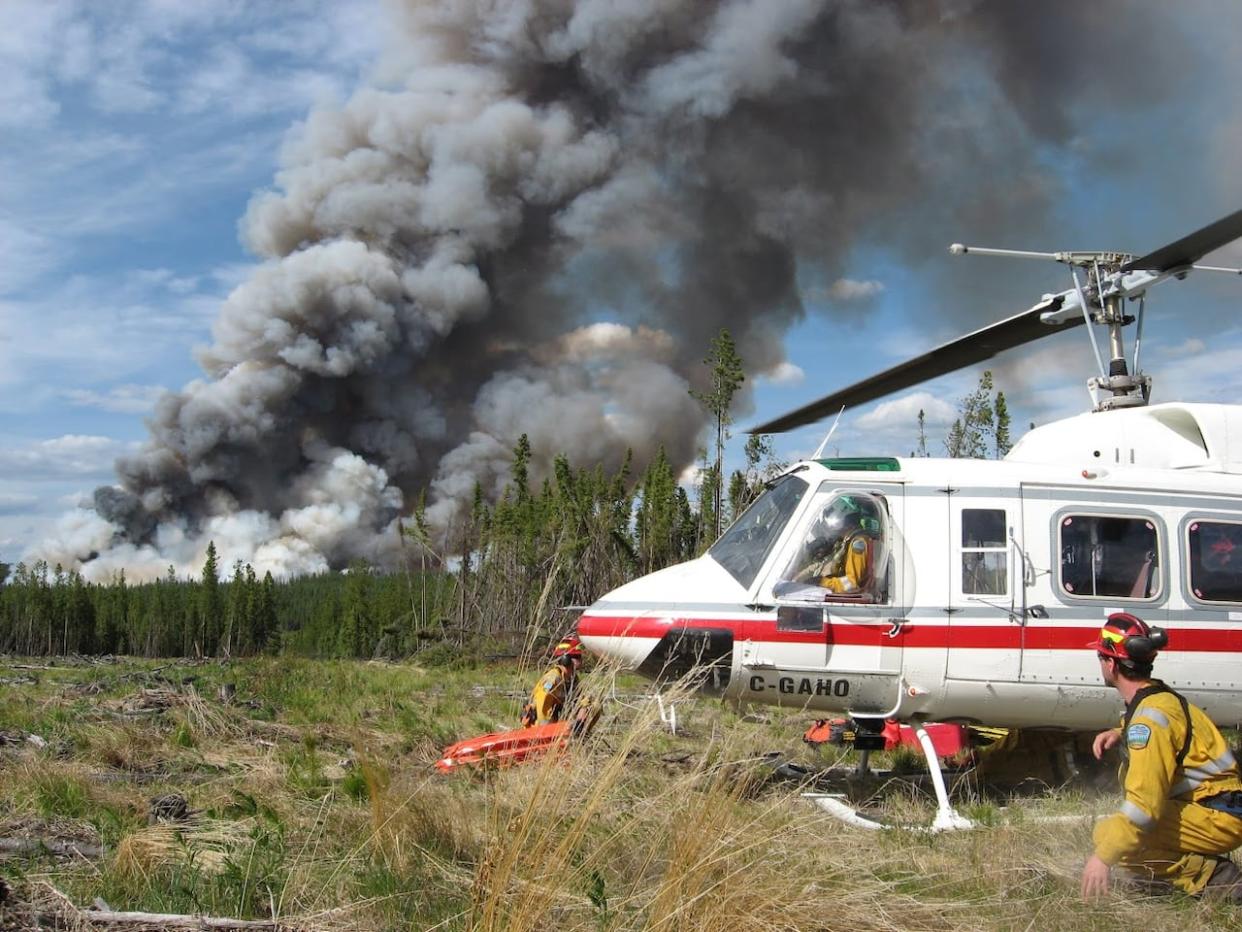
Poor internet connection? Access a low-bandwidth, accessible version of this story on CBC Lite.
Wildfire season is well underway in Alberta, with some communities already being forced to evacuate and provincial government officials implementing fire restrictions.
Last year marked a record wildfire year, burning more than 2.2 million hectares in Alberta. But drought helped several dozen fires survive throughout the winter and has left various regions even drier than a year ago, resulting in an early wildfire season.
The Alberta government introduced fire restrictions for forest protection areas on April 24, as drought conditions bring extreme wildfire risk. Emergency management officials urged people to be cautious in the weeks ahead.
This article contains information and publicly available resources so people can prepare in advance for wildfires and stay updated about potential hazards in their community.
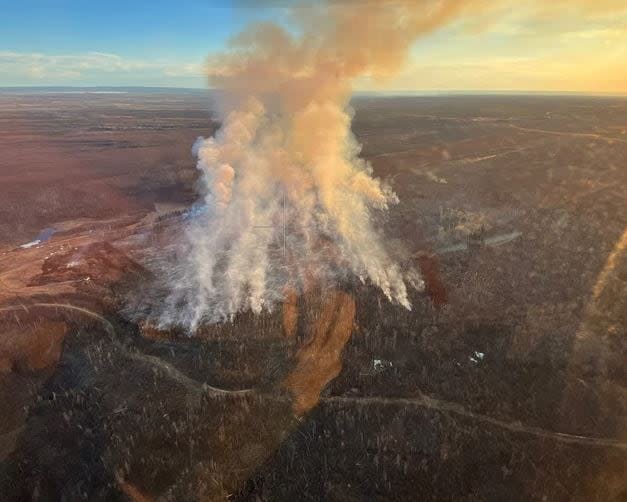
An aerial image of a wildfire burning southeast of Fort McMurray, Alta., on April 21. The fire posed a threat to the community of Saprae Creek Estates and residents of the hamlet were under an evacuation notice. (Alberta Wildfire)
Tracking wildfires
Alberta Wildfire tracks all the wildfires burning in the province. It also keeps tabs on where fire bans, restrictions and advisories are in effect.
All wildfires that have occurred so far in 2024 can be found on the Alberta Wildfire interactive map. The map is part of the agency's status dashboard, which contains various statistics, such as the number of active fires and in what forest areas — Alberta has 10 of them — are affected.
The agency also updates a list of particularly serious fires — called wildfires of note — that are of public interest or could threaten people, communities, or important infrastructure. Fire information on that list is updated daily. The list can also be found on the Alberta Wildfire dashboard.
People can stay up to date by following Alberta Wildfire on Facebook, X (formerly Twitter), Instagram and YouTube.
People can also visit Alberta 511 to view highway conditions, including potential closures.
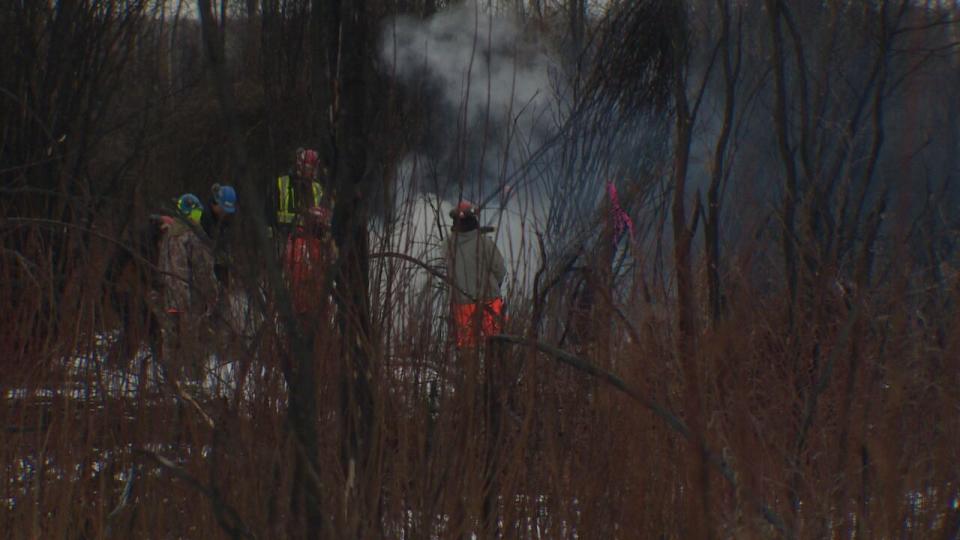
Provincial firefighters dressed in bunker gear scout the area of Fox Lake, near High Level, Alta., to map out wildfire hotspots and dig up carryover ground fires. (Trevor Wilson/CBC)
Fire terminology
Alberta Wildfire categorizes fires into several groups, depending on how firefighters are containing their flames.
Out of control: A fire that is not responding to suppression efforts and is expected to grow. A wildfire may show low activity or little growth, but it could still be classified as out of control because it isn't deemed to be contained.
Being held: A fire for which a perimeter was established around the flames that should stop it from spreading, under the prevailing or forecasted weather conditions. This distinction does not mean the fire is extinguished.
Under control:A fire that can no longer spread — although firefighters may still be trying to put out hot spots, or the site may be surveilled for any activity.
Turned over: Some wildfires are outside of Alberta Wildfire's jurisdiction, but the agency is helping with the firefighting. These are defined on the wildfire map as mutual aid fires. If a fire receives a "turned over" designation, then it means the agency responsible for putting it out — such as a municipal fire department — has that responsibility. A wildfire must be deemed 'under control' before it is turned over.
Wildfire starters
Alberta Wildfire investigates how fires are caused, breaking it down into two categories: human activity or lightning strikes.
About 60 per cent of the 1,088 wildfires that burned in Alberta last year were started by humans, provincial data shows. About one-third were caused by lightning.
But the lightning-caused fires did the most damage last year, burning about 1.75 million hectares — about 80 per cent of the total burned area.
Alberta Wildfire operates a lightning detection system that allows officials to track the wave of electricity and differentiate between bolts that land on the ground. Aerial patrols can then use the location data to check on certain points for fires.
Human-caused fires could include things like campfires and recreational activity, agricultural operations, industrial activity and arson.
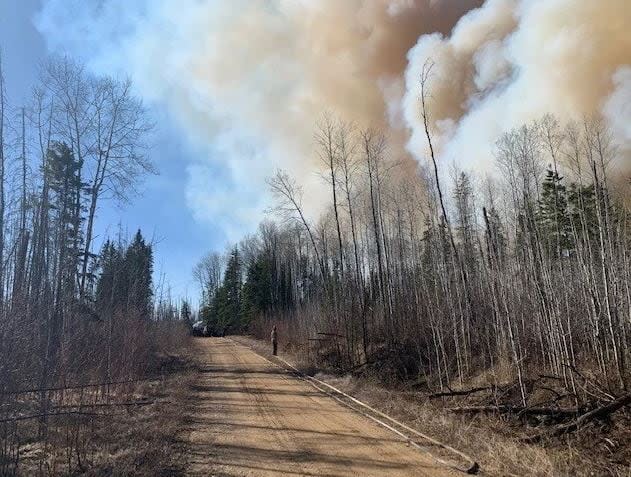
Anyone who sees a wildfire should report it by calling 310-3473. (Alberta Wildfire)
Fire bans, restrictions and advisories
The Alberta government has a map, showing what communities and regions have active fire advisories, restrictions and bans.
Alberta Parks also lists such prohibitions within provincial parks and campgrounds.
The provincial government explains how each distinction differs:
Fire advisory: A signal that fire danger has increased. Fire permits may be restricted or suspended, but safe wood campfires and charcoal briquette barbecue fires are allowed.
Fire restriction: Prohibits wood campfires on public land, but allows them inside provincial campgrounds and private property. Charcoal barbecue fires are also allowed. Fire permits may be restricted, suspended or cancelled, but no new permits would be issued.
Fire ban: Prohibits wood campfires — on any type of property — and charcoal barbecue fires. Any existing fire permits will be suspended or cancelled, and no new permits will be issued.
Restrictions on off-highway vehicles, such as ATVs, and forest closures could also be issued.
People could be penalized for violating fire prohibitions, according to the provincial government's website. Someone who burns without a permit could be fined $360. People who knowingly contravene the Forest and Prairie Protection Act by starting a wildfire can be prosecuted in the courts and can be fined up to $100,000 or imprisonment for up to two years.
Prevention and preparation
Alberta's FireSmart program teaches people how to mitigate the risks and how fires could affect their communities and local infrastructure.
The program helps people plan at three different stages, helping residents, government officials and industry learn how to manage the landscape around homes and properties to prevent fires from causing damage.
The provincial government suggests people should be prepared to care of themselves for at least three days, such as storing important documents — IDs and banking information, for example — in a safe place above ground and maintaining an emergency kit.
An emergency kit should have non-perishable snacks, like granola bars and trail mix, and at least 72 hours worth of water and electrolytes — four litres of liquid per person, per day. It should have medical supplies, like bandages and antiseptic wipes, and medications — over-the-counter and prescription.
A copy of all personal documents, including IDs, social insurance numbers and citizenship papers, should be stored in the kit in a protective, sealable bag.
If possible, people should pack enough cash to cover up to three days' worth of expenses. They should pack a multi-tool, a battery-powered crank radio and flashlight, extra blankets, electronics with a vehicle charger and some small things to amuse themselves — books and portable toys and games.
The provincial government suggests people check on their supplies to make sure nothing is expired, batteries are charged and documents and credit cards are updated.
Alberta Wildfire tracks fire danger, how fires are behaving and how weather is affecting potential risk.
Anyone who sees a wildfire should report it to Alberta Wildfire by calling 310-3473.
Evacuations
When a wildfire is nearby, the Alberta government urges people to listen for updates from local authorities and be prepared to evacuate quickly.
There are two types of evacuation advisories:
Evacuation alerts: warn the public of a potential or current threat. If an alert is issued, people should prepare to evacuate because an evacuation order could be coming.
Evacuation orders:issued when the public must the area for their safety.
People can stay up to date about emergencies through Alberta Emergency Alert.
The Alberta Emergency Management Agency tracks alerts and places them on a map. Yellow icons mark advisories, encouraging people to take action. Red icons are critical and people need to take immediate action.
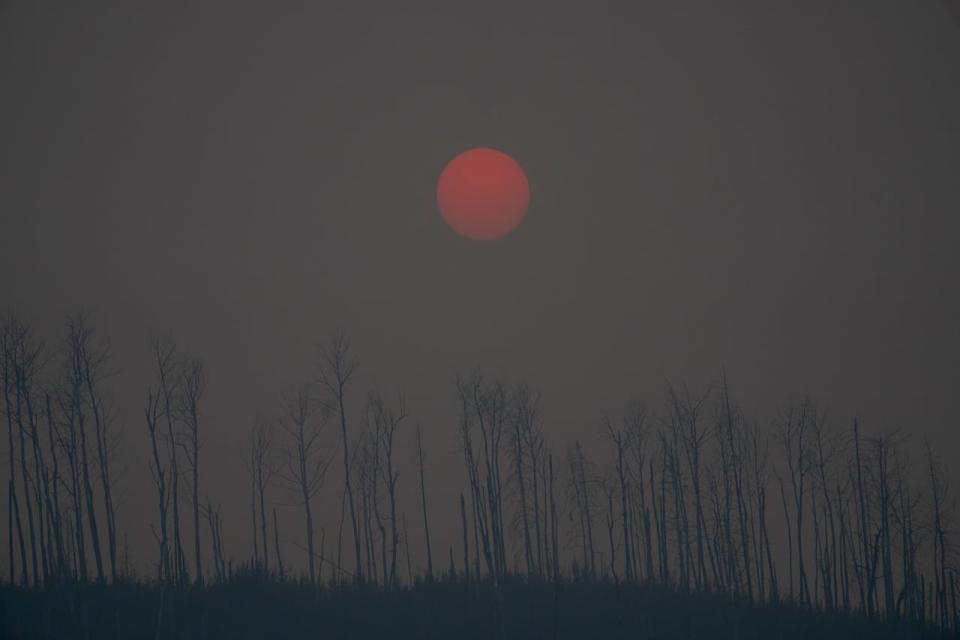
Last year set a new record for wildfire smoke in multiple Canadian communities. (Victor R. Caivano/AP)
Emergency alerts are sent to mobile devices, TV and radio within an affected region.
Insurance
The government suggests people know their insurance options and policy limits to understand what can and cannot be protected. It encourages people to speak with an insurance agent about their specific needs.
People should write a detailed list of all their belongings. Alberta has disaster financial assistance programs that may be able to reimburse Albertans for uninsurable items.
Anyone who has to evacuate should keep all receipts of their expenses.
Smoke
Wildfire smoke carries toxins that can be harmful to people and worsen pre-existing conditions, or pose greater risks to certain groups, like seniors.
Environment and Climate Change Canada, the federal weather agency, issues weather alerts including special air quality statements.
It also calculates an air quality health index, which tracks how safe the air is to breathe, and offers information about symptoms of smoke inhalation and how to protect oneself.
Helping Albertans
The provincial government says people who want to help others ought to contact their community.
People concerned for someone's safety should call:
211 if they are in distress or in an unsafe place.
911 if they are unconscious or need medical care.
The Canadian Red Cross has launched a fund to help people affected by wildfires.

